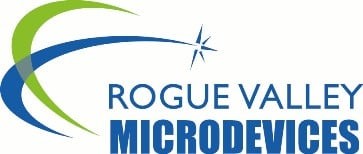What Do Small Companies Need to Know About the CHIPS Act?
IBM’s Poughkeepsie, N.Y. site was the backdrop a few weeks ago for one of President Biden’s speeches promoting the passage of the $52 billion CHIPS (Creating Helpful Incentives to Produce Semiconductors) and Science Act, a rare piece of legislation for which the president won bipartisan support. During the president’s visit to the facility on October 6th, IBM Chairman and CEO Arvind Krishna promised to invest $20 billion from the CHIPS Act in tech and job creation in New York State to “ensure a reliable and secure supply of next-generation chips for today’s computers and artificial intelligence platforms,” according to a company blog post.
Two days before the IBM announcement, Micron revealed plans to invest an eye-popping $100 billion in domestic chip manufacturing, specifically to create a mega-fab that will increase leading-edge memory in the U.S. over the next 20 years. And before that? It was Intel breaking ground on a $20 billion semiconductor fab outside of Columbus, Ohio.
It’s clear that tech-industry giants are applauding the CHIPS Act because it will encourage their domestic investments in manufacturing, R&D, job creation, and training with government financing and tax incentives. But how will the CHIPS Act benefit a smaller industry-ecosystem members, like Rogue Valley Microdevices? Or, for that matter, how will the act bolster the fabless design startup, the university R&D lab, and the chip equipment and materials supplier? Is there an incentive in the CHIPS Act for the rest of us?
The short answer is yes.
The U.S. Commerce Department, which recently published its strategy for the disbursement of grants and loans, said it would especially encourage participation from small and underserved businesses, and would favor partnerships between large and small organizations.
Although specific application guidelines won’t be available from the Department until February 2023, the National Institute of Standards and Technology (NIST) recently published a request for information (RFI) that will help its CHIPS Program Office (CPO) “inform the design and implementation of the CHIPS incentive programs.”
Just to be clear about a process that’s not at all clear, the government is soliciting feedback on how it should implement the CHIPS Act incentive programs, and on how it should develop the new institutes that will enhance U.S. leadership in semiconductor manufacturing. If you’d like to make a comment, do it before the comment period ends on November 14, 2023.

“Companies should immediately begin to pull together key corporate and project information and communicate with state and local officials as these funds will be competitive,” the firm posted recently.
On the face of it, the CHIPS Act offers a major opportunity to solidify and expand semiconductor/microelectronics manufacturing in specific states and regions. Rogue Valley Microdevices’ home state of Oregon, for example, is a leader in semiconductor innovation, design and manufacturing. After all, Oregon is home to 15% of the national semiconductor workforce.
But a new semiconductor task force report published by the Oregon Business Council (full disclosure: Rogue Valley Microdevices is a member) laments that Oregon “is playing catch-up on forging the kind of deep and sustained industry-university-government (state and local) partnerships and trust that are necessary to move swiftly when opportunities like the CHIPS Act … initiatives arise.”
In short, the report implies Oregon might miss the boat on the bulk of the CHIPS Act funding unless the many local factions can come together soon as a united front. Coincidentally, it points to IBM and New York State as “a key model for how Oregon should seek to develop its chip-related innovation ecosystem.”
The lessons from the New York model include:
- a sustained commitment of the state’s elected officials
- direction and stability from corporate industry “anchor”
- deals and decisions made “at the speed of the industry”
So what do you think?
Oregon is far from the only state that could benefit from the CHIPS Act. We’d like to hear whether you believe your company and your region are prepared to move forward immediately when the applications become available in February 2023. Email us at info@roguevalleymicro.com with your thoughts.
And if you take one action after reading this blog post today, go to NIST’s CHIPS Program Office, where you can join the mailing list, watch webinars, and read the latest news.
The CHIPS Act represents the U.S. government’s largest investment in the semiconductor/microelectronics manufacturing ecosystem. Companies of all sizes—not just industry juggernauts—are vital to the long-term health and well-being of that ecosystem. We hope you’ll stake your claim when the time comes. We all stand to benefit if you do.

Jessica is equally committed to advancing the global microelectronics industry. She’s a member of the SEMI Board of Industry Leaders, and is a much sought-after speaker who presents at conferences throughout the U.S., Europe, and Asia.
She is also an avid believer in corporate-community partnerships that advance both STEM education and economic opportunities that improve the quality of life for the people of Oregon. As such, she is chairman of the board of the Rogue Workforce Partnership and is a member of the board of the Oregon Business Council. Connect with Jessica on LinkedIn.










